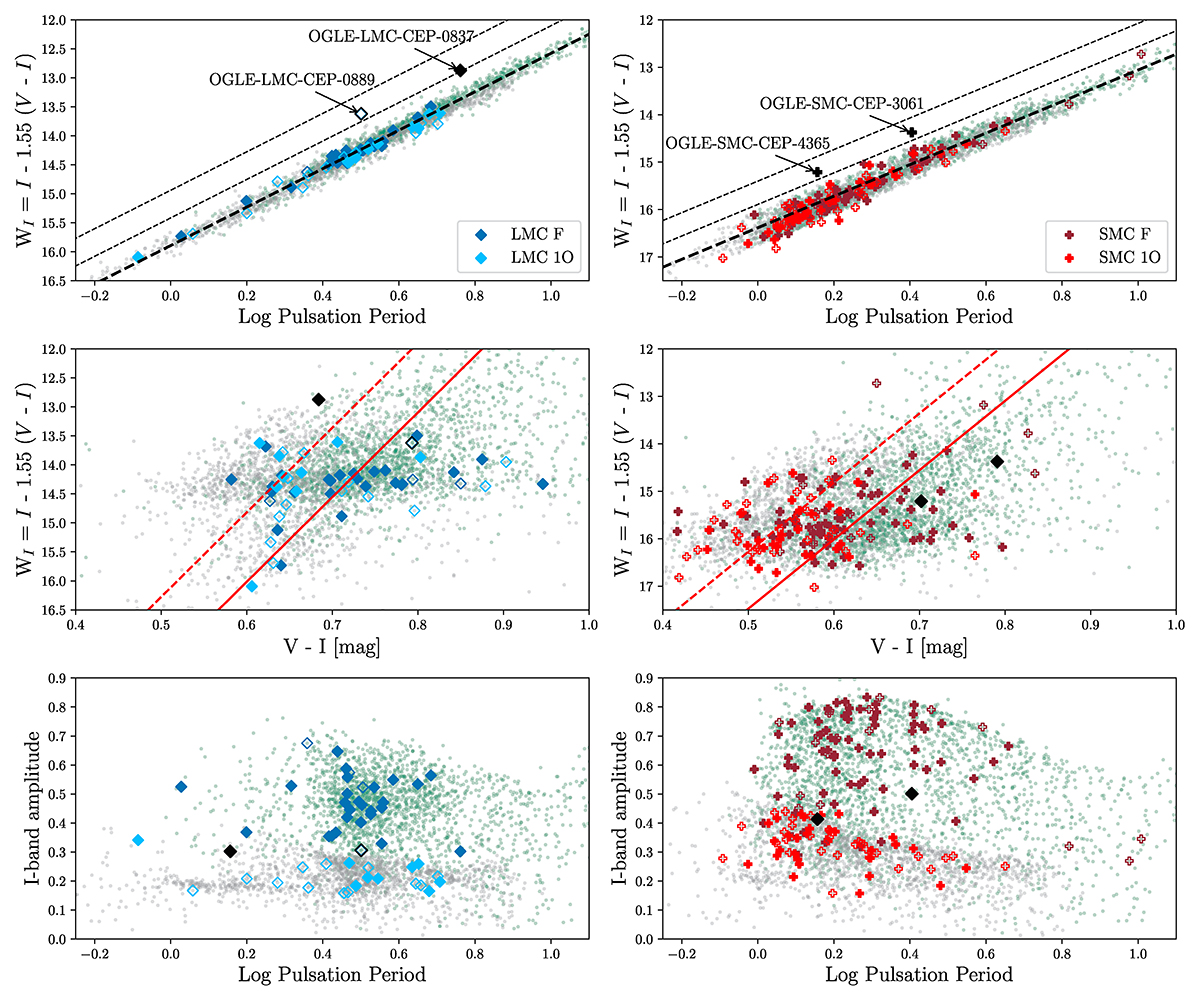Fig. 7.

Download original image
Cepheid Period – Luminosity (P–L) relation (top-left) using the reddening-free Wesenheit index for fundamental-mode (blue diamond symbol) and first-overtone mode (light blue diamond symbol) Cepheids from the LMC sample. The black solid line depicts the adopted Period-Wesenheit relation for the LMC whereas the black dashed lines indicate if Cepheids are 50% and 100% brighter than the P–L relation respectively. Color-magnitude diagram for the LMC (middle), where the solid red line denotes the color of a typical Cepheid, while the dashed red line denotes the total brightness of a Cepheid if it had a companion of similar color and luminosity. Distribution of I-band amplitude as a function of the logarithm of the pulsation period (bottom-left). The right three panels are the same as above but for the SMC. For both LMC and SMC fields, the candidate overbright Cepheids are marked with an arrow. Note: Filled symbols denote strong candidates, whereas empty symbols denote marginal candidates. The background green and gray points denote fundamental and first-overtone mode Cepheids from the full OGLE database respectively for LMC (Soszyński et al. 2008) and SMC (Soszyński et al. 2010). The first-overtone candidates are “fundamentalized” using Eq. (9).
Current usage metrics show cumulative count of Article Views (full-text article views including HTML views, PDF and ePub downloads, according to the available data) and Abstracts Views on Vision4Press platform.
Data correspond to usage on the plateform after 2015. The current usage metrics is available 48-96 hours after online publication and is updated daily on week days.
Initial download of the metrics may take a while.


